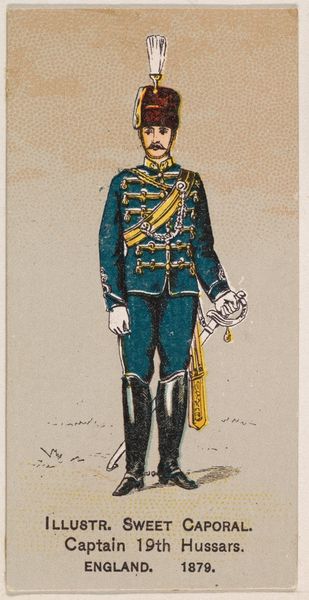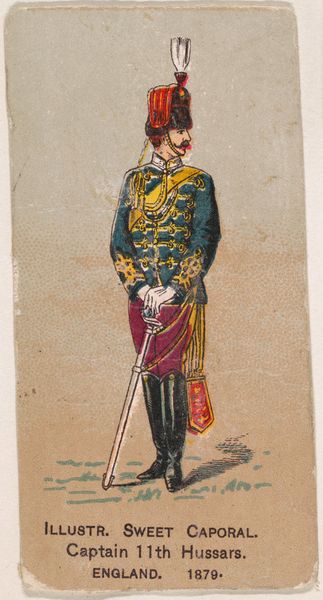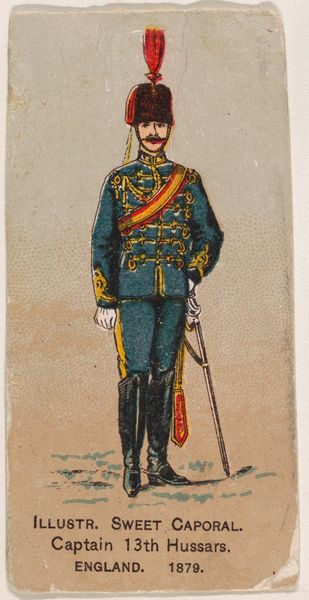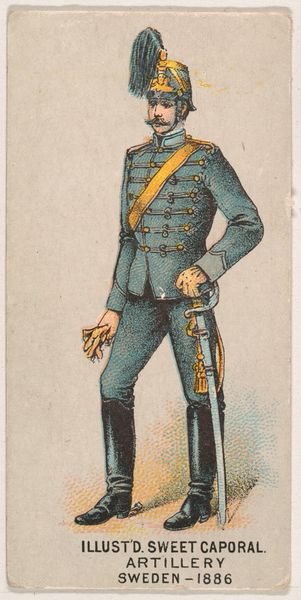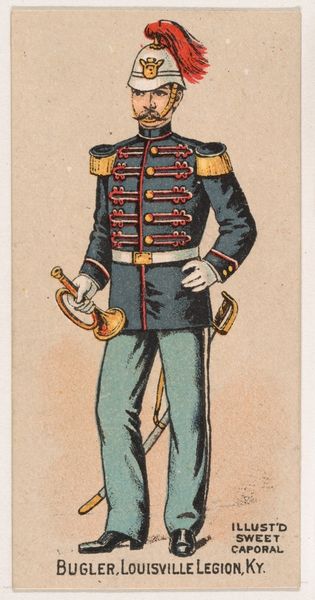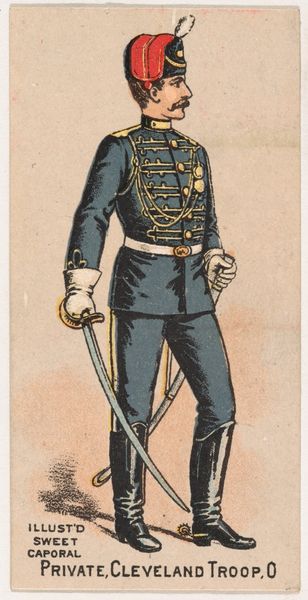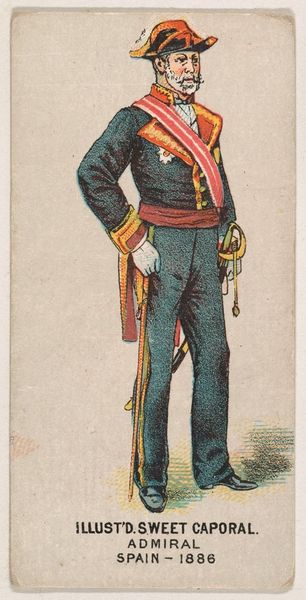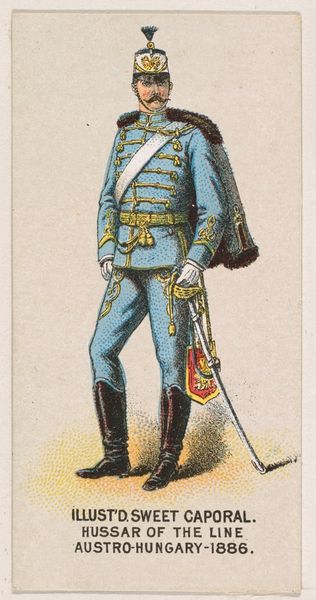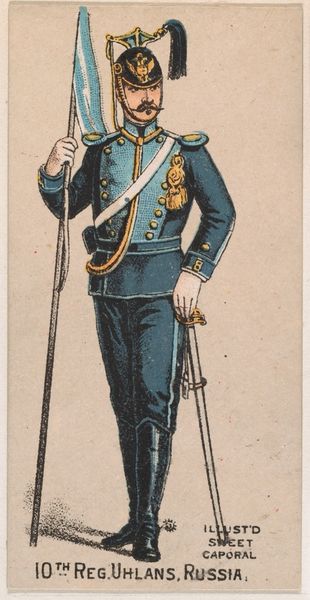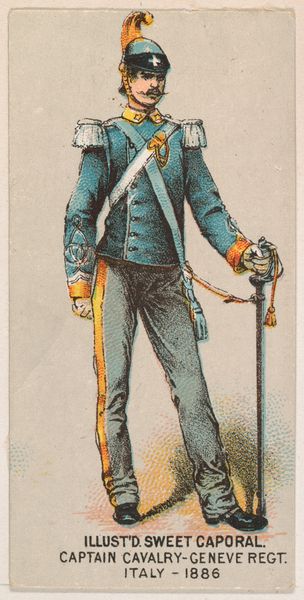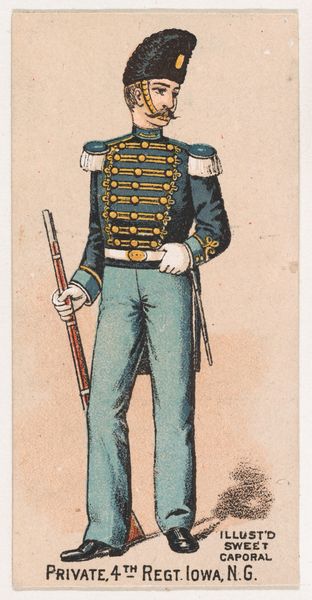
Captain, 10th Hussars, England, 1879, from the Military Series (N224) issued by Kinney Tobacco Company to promote Sweet Caporal Cigarettes 1888
0:00
0:00
drawing, print
#
drawing
# print
#
impressionism
#
caricature
#
caricature
#
men
#
cartoon style
Dimensions: Sheet: 2 3/4 × 1 1/2 in. (7 × 3.8 cm)
Copyright: Public Domain
Curator: Here we have "Captain, 10th Hussars, England, 1879," a print from the Military Series (N224) made around 1888 by Kinney Tobacco Company. Editor: It's striking how flat the figure appears against that light ground, almost like a cutout. The limited color palette—primarily blues and golds—contributes to its stylized effect. Curator: Indeed. Kinney Tobacco Company created these images to promote Sweet Caporal Cigarettes. These prints served as promotional material, intended to be collected and traded, thus becoming intertwined with consumer culture. The use of drawing and printmaking aligns it with mass production, far from unique artistry. Editor: Yet, within those constraints, there's attention to form. Consider the repetition of circular motifs—the buttons, the decorations on his headwear, the curve of his moustache—it creates a visual rhythm that is undeniably pleasing, if somewhat repetitive. Curator: The series itself reflects a growing interest in military history and pageantry. Placing the officer in a series implies a certain homogenization, turning the individual into a type. It transforms military valor into a commercial asset to push Sweet Caporal Cigarettes. Editor: The overall impression, for me, hinges on the interplay between the rigid pose and the slight caricaturization. There's a tension between formality and implied humor in that cartoon-style, wouldn't you agree? Curator: To me, that "humor" is inherent in the means of production. This card, made for the ephemeral purpose of advertisement, attempts to elevate its subject—a British Captain—while simultaneously reducing him to a commodity. This paradox reflects the tensions between art, labor, and consumerism prevalent at the time. Editor: I see how you analyze it. I'm drawn back to that decorative banner slung from his hip— the symbolism woven within, the skulls… Curator: A banner reduced to its material components: cloth, ink, and the labor needed to produce it, distributed for free for profit. Editor: So, finally, we both look beyond that miniature frame to broader notions about the world it reflects. Curator: And reveals, revealing not just the representation of a captain, but also a whole system of values and exploitation inherent in the production and consumption of tobacco and image-making.
Comments
No comments
Be the first to comment and join the conversation on the ultimate creative platform.
